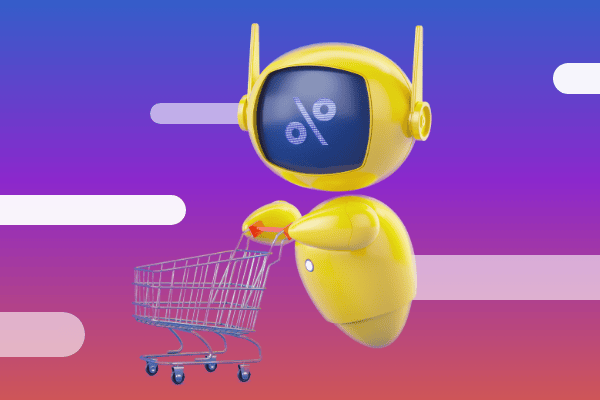Summary
Is standardization in retail media achievable? More importantly, is it necessary? As the industry evolves, understanding the impact and feasibility of standardization becomes vital. This series delves into the heart of these questions, exploring the potential transformations standardization could bring to the dynamic world of retail media.
Read all of the posts in this retail media standardization series.
There’s a lot of attention on retail media these days, and for good reason – it’s expected to grow by 28.5% next year for a total of $59.61 billion, outpacing overall digital advertising growth and taking over a big slice of digital ad revenue. Alongside the buzz are the inevitable buzzwords. At CES 2023, the phrase “clean rooms” popped up in many retail media discussions. At ShopTalk, “incrementality” was everywhere. And at Advertising Week New York last month, a new favorite emerged: “standardization.”
“Standardization” is proving to have some serious staying power in discussions on retail media because, quite simply, it will ultimately drive growth. Skai’s own State of Retail Media Survey 2023 revealed that the lack of standardization across retail media is one of the biggest inhibitors to spending growth. And according to the Association of National Advertisers, advertisers aren’t realizing the full value of their retail media investments without measurement standards – and they expect the networks to implement change.
Lack of standardization across RMN platforms poses a challenge. Brands believe a lack of measurement standardization and transparency are preventing advertisers from deriving full value from their RMN investments. Improvement is needed and expected in these areas.
But first, let’s define standardization
In retail media, standardization refers to compliance with established, compatible measurements across retailers to simplify the comparison of ad metrics. Since standardization leaves plenty of room for variation, it’s distinct from unification, which would create an identical experience with each retailer. Search advertising went through a unification process that helped the channel grow rapidly, but it’s unlikely that retail media will ever achieve the same level of uniformity. There are too many networks and nuances between categories for that to happen.
Auction model standardization: a growth driver for Walmart Connect
We already have an excellent example of retail media standardization leading to growth. Last year, Walmart Connect adopted Amazon’s second price auction model, freeing advertisers from the high costs per click and lower return on ad spend that its old first price auction model had created. Advertisers reinvested those saved funds and more, scaling campaign spending on the Skai platform and driving same-store growth on Walmart by 29% year-over-year.
How the unification of search advertising transformed the channel
Standardization, or actually total unification, drove growth for the search advertising channel, too. In the early days of search, Bing resisted following Google’s standards, instead choosing to pursue unique-to-Microsoft offerings, names, and measurements. As their share-of-wallet stagnated, Microsoft realized that advertisers were always going to compare performance on both Bing and Google in order to justify investments. Microsoft was just making that harder to do by forcing advertisers into apple-and-orange comparisons.
Eventually, Microsoft aligned with Google’s standards. In fact, Bing went a step further and unified its interface with Google’s. It was a big win for everyone. Revenue increased on Bing. Advertisers could execute their campaigns faster and easier. And third-party partners like Skai no longer had to spend time interpreting and aligning data. Instead, we could focus on features that drive better performance and, thus, greater investment.
One great example of this is Skai’s Campaign Mirroring feature. Once Google and Bing aligned on almost identical campaign setups, it became possible to copy campaigns from one publisher to the other – saving resource-constrained advertising teams lots of time and effort. Take Thomas Cook’s story. Thomas Cook recognized that with 21M active users and 504M searches on Bing, they had access to an untapped audience. But it would take hours for their team of two to manually duplicate their Google Adword campaigns on Bing. So, instead, they used Campaign Mirroring to do the work in mere minutes. Over the next year, Thomas Cook saw a 93% increase in revenue and a 106% increase in conversions. And of course, Microsoft saw a significant increase in spend as well.
Organizations answer the call for retail media standardization guidelines
At Cannes Lions, Albertsons Media Collective shared its preliminary framework for standardizing specifications, methodologies, terminologies, and disclosures across all retail media networks. The Interactive Advertising Bureau (IAB) collaborated with the Media Rating Council (MRC) to develop the IAB/MRC Retail Media Measurement Guidelines. And the Incorporated Society of British Advertisers recently released its Responsible Retail Media Framework to standardize definitions, data availability, transparency, and attribution – the result of a yearlong collaboration with Omnicom Media Group and many players in the industry.
But the question remains: can retail media really be standardized? Retail media’s retailers, categories, and shopping behaviors are so varied that true standardization may not be achievable. And so far, the retailers themselves haven’t been moving quickly to make any changes.
So, where does this leave advertisers?
If standardization is slow to arrive, third-party technology partners like Skai will be even more critical in helping advertisers make the best of the data they have and scaling the growth of the channel through:
Greater transparency
Platforms like Skai provide deeper contextual data, creating efficiency in spend and encouraging brands to reinvest. Advertisers benefit from improved program transparency, while retailers benefit from increased investment. It’s a win-win.
Greater connectivity
Retail media doesn’t sit in a silo. It needs to be connected with other channels so advertisers can see the big picture. Skai consolidates data, workflows, and reports, offering advertisers a unified hub for planning, activation, and measurement. This connectivity facilitates quicker, more effective decision-making, reinforcing the case for increased investment.
Greater control
There’s an argument to be had that advertisers need flexibility more than strict standards. Sophisticated teams desire the freedom to design their own measurement paradigms, even with a framework for standards in place. Skai’s role is to provide advertisers the flexibility to determine how best to leverage data in the most valuable ways for their company.
In the next posts in this series, we’ll dive deeper into each of these essentials –transparency, connectivity, and control – and how each one benefits both advertisers and retailers. We will also take a look at what we need from the retailers to make this happen and scale investment.







